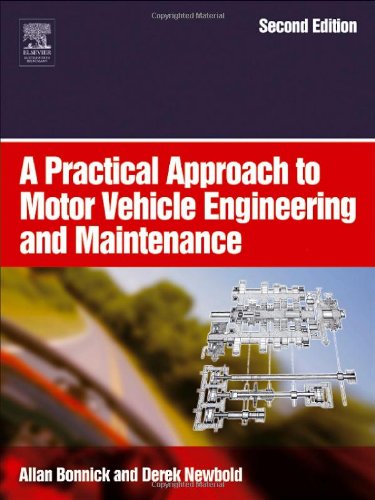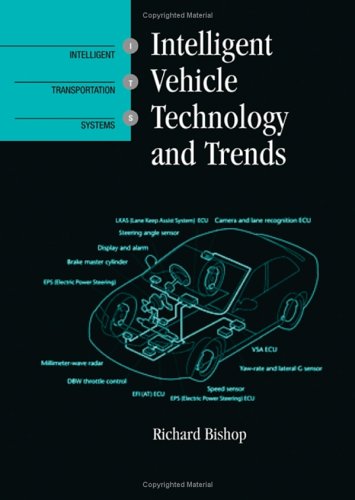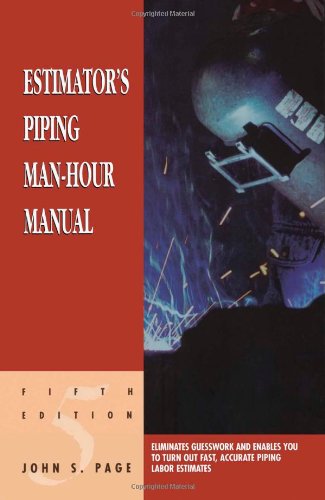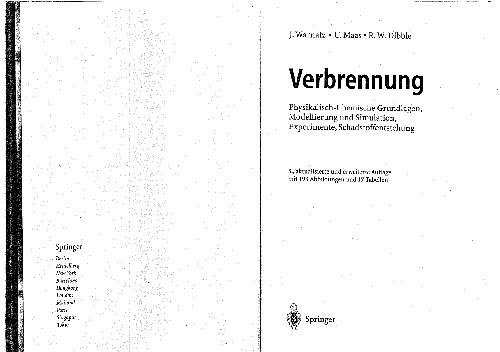Allan Bonnick, Derek Newbold0750663146, 9780750663144, 9780080455495
Table of contents :
Cover……Page 2
Contents……Page 6
Some details about the type of work involved in repair and maintenance of vehicles……Page 12
Motor vehicle repair and maintenance health and safety topics……Page 13
Vehicle hoists……Page 14
Brake and clutch linings……Page 16
Organization of the firm……Page 17
Accountability……Page 18
Non-informed customers……Page 19
Quality control……Page 20
Returning the vehicle to the customer……Page 21
Layout of components……Page 23
Location of major components……Page 24
Cycles of operation……Page 27
Events below the piston……Page 29
Second stroke (piston moving downwards)……Page 30
Capacity, swept volume, compression ratio……Page 32
Cylinder arrangements and firing orders……Page 33
Horizontally opposed cylinders……Page 34
Valve-timing diagrams……Page 35
Valve timing: lead, lag and overlap……Page 36
Valve timing……Page 37
Combustion in a diesel engine……Page 38
First phase – ignition delay period……Page 40
Exhaust valve……Page 41
Valve springs……Page 42
Hydraulic tappet operation……Page 44
Cylinder head tightening sequence……Page 46
Piston skirt……Page 48
Cylinder block……Page 49
Cylinder liners……Page 50
Seals……Page 51
Lubrication……Page 52
Lubrication system……Page 55
Function of the oil……Page 57
Function of the sump……Page 58
Oil pump……Page 60
Rotary pump……Page 61
Oil filter……Page 62
Full-flow filter……Page 63
Cartridge filter……Page 64
Centrifugal filter……Page 65
Total loss lubrication……Page 66
Typical assessment sheet……Page 67
Self assessment questions……Page 68
Heat transfer……Page 70
Over-cooling……Page 71
Circulation of cooling air……Page 72
Liquid cooling……Page 74
Pump-assisted circulation……Page 75
Radiator and heater matrix……Page 76
Film core……Page 77
Separate expansion or header tanks……Page 78
Radial flow……Page 79
Bellows type……Page 80
Pressure cap……Page 81
Semi-sealed system……Page 82
Flexible fan blades……Page 83
Cooling fan with swept tips……Page 84
Free-wheeling……Page 85
Variable-pitch……Page 86
Function……Page 87
Engine temperature gauge……Page 88
Indirect ventilation……Page 90
Routine maintenance……Page 91
Calculations……Page 92
Activity……Page 93
Safety aspects……Page 94
Self assessment questions……Page 95
Petrol fuel……Page 97
The fuel tank……Page 98
Mechanical lift pump……Page 99
Electric fuel pumps for petrol injection systems……Page 100
Variable or fixed choke carburettor……Page 101
Slow-running (idling) systems……Page 102
Progression jets and acceleration devices……Page 103
Cold starting devices……Page 104
Acceleration and mixture enrichment……Page 106
Ford variable-venturi carburettor……Page 107
Computer controlled multi-point fuel injection system……Page 108
A fuelling map……Page 109
Single point injection……Page 110
An example of computer controlled multi-point fuel injection……Page 111
Exhaust catalyst condition monitoring……Page 112
Computer control of evaporative emissions……Page 113
Carburettor systems……Page 114
Fuel supply problems – carburettor fuel system……Page 115
Adjusting CO level and idle speed – petrol injection [Early models of vehicles]……Page 116
Routine maintenance……Page 117
Petrol injector testing……Page 118
Fuel filters……Page 120
Multi-element injector pump……Page 122
Excess fuel device……Page 124
Phasing and calibration……Page 125
Bleeding the fuel system……Page 126
The DPA or rotary fuel injection pump……Page 127
Injectors……Page 129
Pintle……Page 130
Heater plugs……Page 131
Thermo-start unit……Page 132
Common rail diesel fuel system……Page 133
Operation of the injector in the open position (diagram B)……Page 135
Activity – tuning single carburettors……Page 136
Self assessment questions (diesel)……Page 137
Self assessment questions (petrol fuel systems)……Page 138
Temperature control of the engine air supply……Page 140
Fuel injected engine air intake system……Page 141
Air intake manifold……Page 142
Turbo charging……Page 144
Exhaust system……Page 146
Function……Page 147
Method of operation……Page 148
Maintenance……Page 149
Self assessment questions……Page 151
Diaphragm-spring clutch……Page 153
Friction plate construction……Page 154
Woven linings……Page 155
Adjustment……Page 156
The fluid flywheel……Page 157
The torque convertor……Page 158
Helical cut teeth……Page 159
Sliding mesh gearbox……Page 160
Constant mesh gearbox……Page 161
Constant load synchromesh……Page 162
Gear selection mechanism……Page 163
Trans-axle……Page 164
Forwards reduction……Page 165
Purpose……Page 166
Prop shafts……Page 167
Drive shafts……Page 168
Tracta CV joints……Page 169
Weiss CV joint……Page 170
Banjo……Page 171
Spiral bevel……Page 172
Servicing and adjustments……Page 173
Differential……Page 174
Semi-floating axle……Page 175
Lubrication……Page 176
Double-row self-aligning journal bearing……Page 177
Needle roller bearing……Page 178
Questions……Page 179
Self assessment questions……Page 180
Leaf springs……Page 182
Coil spring……Page 183
Torsion bar……Page 184
Independent suspension……Page 186
Axle location……Page 187
Hydrogas suspension……Page 188
Active or ‘live’ hydropneumatic suspension……Page 189
Air suspension……Page 190
Checking damper operation……Page 193
Introduction……Page 195
Self assessment questions……Page 196
The drum brake……Page 198
The master cylinder……Page 199
The hand-brake……Page 200
Front/rear split……Page 201
The brake fluid reservoir……Page 202
The brake servo……Page 203
Brake adjustment……Page 204
Wear indicators……Page 205
Brake pressure control valve……Page 206
Anti lock braking system (ABS)……Page 207
The wheel speed sensor……Page 208
Under the bonnet……Page 210
Self assessment questions……Page 211
Light vehicle steering layouts……Page 212
Ackermann principle……Page 214
Camber……Page 215
King pin or swivel axis inclination (KPI)……Page 216
Castor……Page 217
Adjusting the track……Page 218
Toe-out on turns……Page 220
Cam and peg……Page 221
Rack and pinion……Page 222
Adjustment of the steering rack……Page 223
Ball-joints……Page 224
Driving hubs……Page 225
Types of car wheels……Page 227
Tyres……Page 228
Cross-ply versus radial-ply tyre……Page 229
Load and speed ratings……Page 230
Tyre regulations……Page 231
Toe-in……Page 232
Camber……Page 233
Activity……Page 234
Self assessment questions……Page 235
The magnetic effect of an electric current……Page 236
The electric motor effect……Page 237
Fleming’s rule……Page 238
Ohm’s law……Page 239
Meters……Page 240
The p-n junction……Page 241
Zener diode……Page 242
Transistors……Page 243
Logic devices……Page 244
Truth tables……Page 245
Read and write, or random access memory (RAM)……Page 247
A practical automotive computer system……Page 248
CAN details……Page 250
Power supply and drivers……Page 251
Multiplexing……Page 252
European On Board Diagnostics (EOBD)……Page 253
Self assessment questions……Page 254
Chemical effect of electric current……Page 255
The case……Page 256
Battery capacity. The amperehour (A–H)……Page 258
Testing batteries……Page 259
The basic vehicle alternator (generator of electricity)……Page 260
A typical vehicle alternator……Page 261
A 6 diode rectifier……Page 262
The BRUSHES and BRUSHBOX……Page 263
DRIVE PULLEY and COOLING FAN……Page 264
Alternator output tests……Page 265
The starter motor……Page 266
Testing starter motor circuits……Page 267
Checking the solenoid contacts……Page 268
Note……Page 269
Self assessment questions……Page 270
Producing the high voltage required to cause ignition……Page 272
Methods of inducing the high tension (HT) secondary voltage……Page 273
Coil polarity……Page 274
The constant energy ignition system……Page 275
Digital (programmed) ignition system – Hall effect sensor……Page 276
Opto-electronic sensing for the ignition system……Page 277
Ignition system refinements……Page 278
Combustion knock sensors……Page 279
Adaptive ignition……Page 280
Hall type sensor tests……Page 281
Servicing an electronic type distributor……Page 282
Static timing Hall effect pulse generator……Page 283
Tests on distributorless ignition systems……Page 284
Diagnostic trouble codes (DTCs)……Page 285
Sliding contact (self cleaning) type of contact breaker……Page 286
Distributor drives……Page 287
The speed sensitive (centrifugal) timing device……Page 288
Distributing the high voltage electrical energy……Page 290
Cold starting……Page 291
Sparking plugs……Page 292
The spark gap (electrode gap)……Page 293
Gasket seat……Page 294
Cleaning spark plugs……Page 295
Safety……Page 296
Checking for H.T. sparking……Page 297
Checking the voltage on the C.B. side of the coil……Page 298
Checking the electrical condition of the ignition coil……Page 299
Some practical applications, i.e., doing the job……Page 300
Setting the timing……Page 301
Checking the static timing with the engine running……Page 302
Dwell angle……Page 303
Servicing a contact breaker type distributor……Page 304
Detonation and pre-ignition……Page 305
Weak spark……Page 306
Self assessment questions……Page 307
Motor……Page 309
Screen wipers……Page 310
Two speed operation……Page 312
Screen washers……Page 313
Problem – electrical overload Possible effect – fuse blown or circuit breaker triggered……Page 314
The coded ignition key and engine immobiliser system……Page 315
Burglar alarm……Page 317
Electric horns……Page 318
Repair and maintenance……Page 319
Electrically operated windows……Page 320
Ordinary twin filament headlamp bulb……Page 321
Sealed beam units……Page 322
Headlamp alignment……Page 323
The ‘flasher’ unit……Page 324
Circuit (wiring) diagrams……Page 325
Colour code……Page 327
The circuit breaker……Page 330
Other circuit protection……Page 332
Connectors……Page 333
Repair and maintenance……Page 334
Thermal type gauges……Page 335
The voltage stabiliser……Page 336
Vehicle condition monitoring (VCM)……Page 337
Air bags and seat belt pre-tensioners……Page 339
Safety precautions, storage and handling……Page 340
Self assessment questions……Page 341
Measuring instruments and measurement……Page 343
Micrometers……Page 344
A metric external micrometer……Page 345
Internal micrometer……Page 346
Calipers, inside and out……Page 348
Crank shaft end float……Page 349
Oil pressure checks……Page 350
Belt tension gauge……Page 351
Cathode ray oscilloscope……Page 352
Sensors……Page 353
Using a multi-meter……Page 354
Decimal places……Page 355
Specification of angles……Page 356
Self assessment questions……Page 358
Studying for NVQ……Page 360
Career Prospects……Page 361
Motor industry organisations……Page 362
Index……Page 363







Reviews
There are no reviews yet.